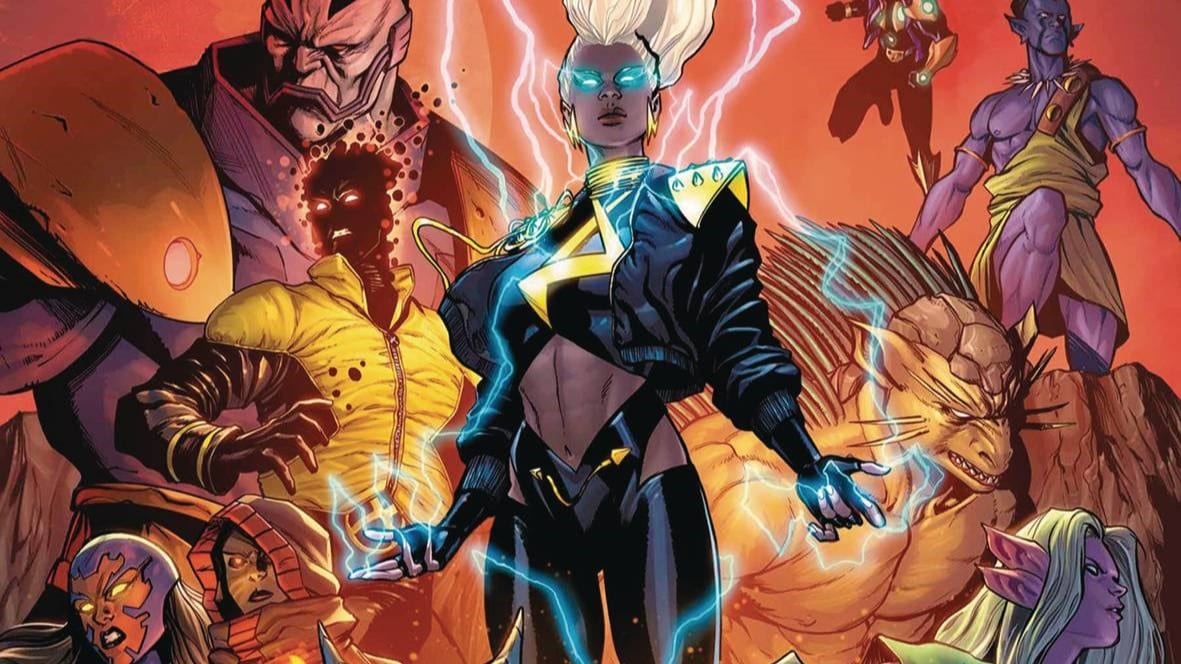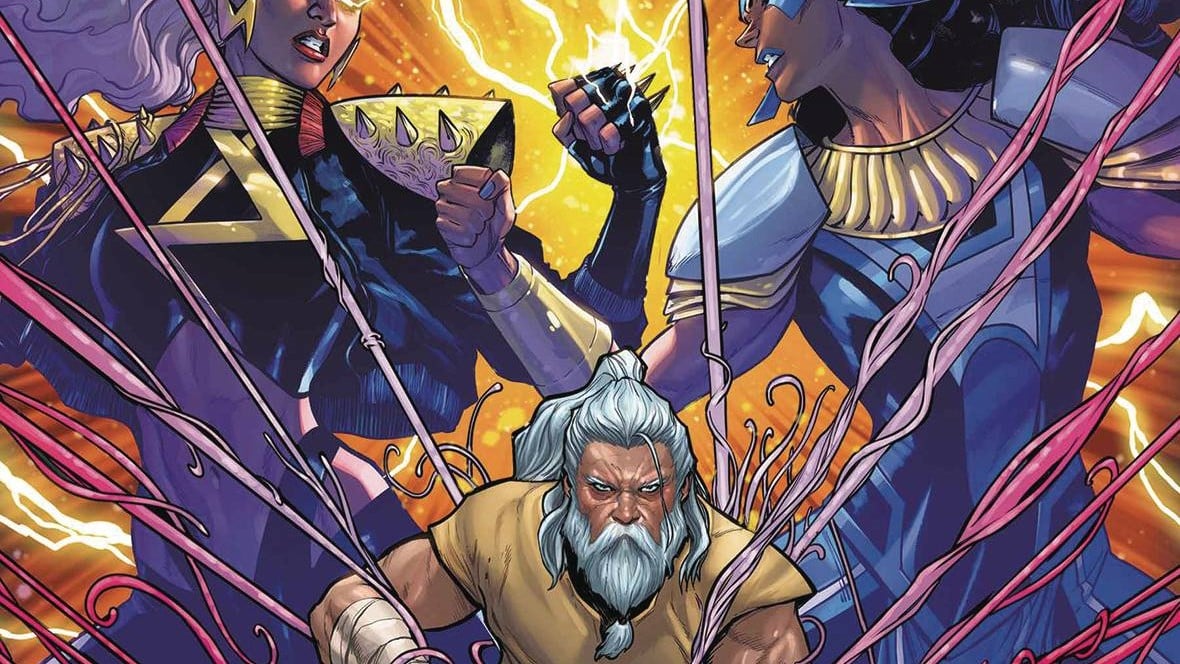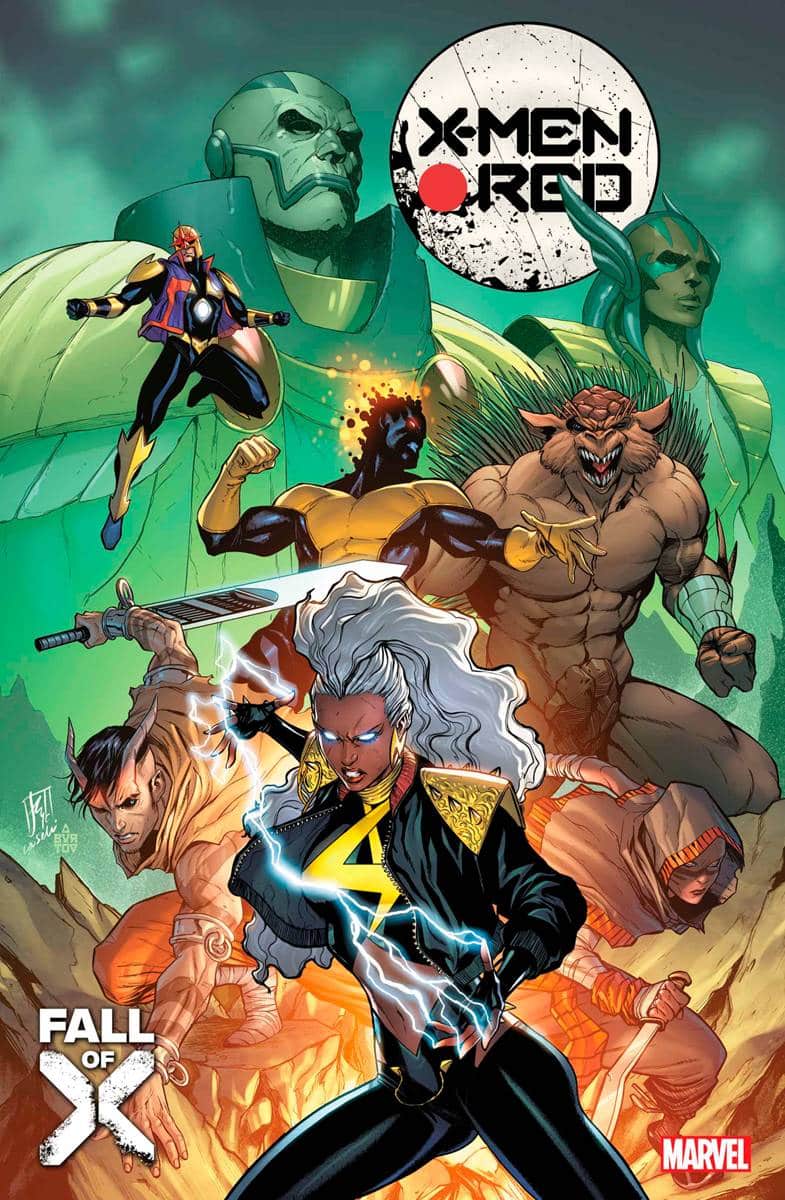The pain is always there, just over the horizon like the sun at dusk, patiently waiting, if not teasing the inevitable full of its punishing power.
Talk to a survivor of trauma, internal or external. They’ll tell you. The brightness of that pain — the intensity, the heat — can be like sitting in the sun with no shade; only endless miles of barren sand in every direction.
There’s a temptation to take a respite from the sun, to build a shade from one’s own flesh, to cover one part of one’s self by exposing another, inevitably deteriorating the whole, eventually bringing, severe, self inflicted pain and guilt.
And thus, for those living through dark times, every moment becomes a choice, a choice where intention becomes the saving grace. Intention in everything, every choice, every decision made every minute of every hour.
Do you choose the needle?
A pill?
A drink?
The Annihilation Helm or an Eternal-laced Uranos trigger?
Or do you choose yourself?
There are choices to be made in X-Men Red #16, none of them particularly good, but all of them, every single one, consequential.
Home is Where the Hatred Is
The pace has picked up, action is abound, and we see the intricate choices made in the depths of despair — and some of their consequences. And while a few notable absences and arrivals may turn the tide one way or another, the players we do see — and their choices — are more than enough to keep us enthralled.
When we first saw Port Prometheus in the beautifully illustrated Planet-Sized X-men #1, it was a gleaming shrine to mutant ingenuity and excellence. An intergalactic trading outpost, signaling the Ascension of mutants to the upper echelon of the galaxy’s pecking order.
And yet here, in yet another “Fall of X” blow for the mutant powers-that-be, we see that dreamscape turned to nightmarish rubble. Port Prometheus, the last stand of the Storm-aligned mutants, is no more.
Are they now refugees? Remember those gifts (bribes) of Mysterium? Will they be paid back with kindness and shelter? Whom can they trust? Where can they go?
What about Chandilar?
Not one of those big questions is answered here, and that’s fine: there’s enough action and intention to go around. Besides, the small moments — Weaponless Zen, looking at a mirror of her young self, and gifting the comfort she never got — gives an emotional resonance pages of exposition could never provide.
In any case, the preamble clears the board of children and those without powers. The only ones left to fight are those strong enough to fight back. Sadly, ironically, the theory of Genesis — survival of the fittest — made real by the helm of Annihilation, seems to have won the day already, no matter what Storm and her Brotherhood do.
A Gift and A Curse
Perhaps the biggest irony in X-Men Red #16 is the “gift” of Uranos. Red has played with the idea of mutant powers — mutant gifts — being as much of a curse or burden as a boon: Gabriel’s boundless power making him mad and irrational, Isca’s power trapping her in a prison of victories.
Here, we see the gift of Uranos — unmitigated, directed chaos for an hour — teased as an irritation and a temptation to Syzya (can’t tell me she’s not named after SZA), a burden for a society seeking to evolve past pure projections of power. Apparently, merely holding the trigger connects the wearer to Uranos, who takes pride in accosting the user to, well, use him. In this sense he becomes a funhouse mirror version of Annihilation: whereas the staff controls by insinuation and small movements, quietly, Uranos tempts with grand gestures of observable bloodletting.
Is one better than the other? More humane? Both are evil, both are temptations, both drugs that may have temporary benefits but will almost certainly harm the whole in the long run.
That there is no right way to do a wrong thing may end up being an ancillary lesson of X-Men Red’s run.
And of other ironies and strengths: we see the (presumably) Omega level power sets of Genesis and Apocalypse’s children. War burns and Famine floods, laying waste to what’s left of the once mighty mutant colony.
And still these powers pale in comparison to the might of Storm.
In “Sins of Sinister,” we saw a resurrected Storm, physically peaked but without memory, struggle to control her power. While she could do much, she didn’t understand the entirety of who she was, and suffered as a result.
This Storm, our Storm, suffers no such fate. She is intimately, innately, intentionally aware of her power — every single permutation of it — and wields it with precise fury. Where so many other writers simply make Storm shoot lightning and fly away, Al Ewing has been methodical in showing all the ways in which someone with total control of the weather — of the power of the planet — might use it. Sure, there’s lightning. But there’s also the absence of air. We’ve seen her use atmospheric pressure. Move herself through the space in an atmosphere of her own volition. Use the power of Vulcan to overpower him without strain. It’s not just that Storm is a force; it’s that she’s a knowledgeable force. She knows who she is, and she does not hesitate to share her knowledge with any thay challenge her — or any who may need her.
This is, of course, amazing. Less amazing is the art from Yildiray Cinar & Federico Blee. While I understand that not every artist and colorist can — or should be — Pepe Larraz and Marte Garcia, the moments here which should be wowing us and awe-inspiring just feel…ok. Normal. Subsided. The colors are muted. The spectacle feels restrained. This is not bad work, not by a long shot, but compared with the almost operatic tone of the script, the art takes a frustrating back seat.
Still, the art suffices, especially on faces up close. Pestilence looks sordidly satisfied after aiming her arrow at Storm; Death, though covered by shadow, feels imposing as he removes his helmet, taking the power of Medusa to a horrifyingly cryptic apex with his death stare. That Death operates under principles not shared by his brethren is not surprising, especially since we’ve known since “Sins of Sinister” that he eventually aligns himself with his “puppy love”. Still, his face turn feels a bit rushed — like there were pages of character building that were condensed into his limited speeches here.
The Choice is Yours
In any case, the stage is set: Uranos, the living manifestation of temptation, asks if Storm will sacrifice her morals to maybe, possibly, pull out a victory. Unseen are Genesis and the Helm, Isca and the Mutant she’s been isolating with (where is Vulcan, anyway? And Brand? And, oh God, the body of the soon to be resurrected Magneto?), and over half of the Arrakki council.
But Apocalypse is here. In the customary one panel parting page, Blue Daddy reigns supreme, emerging with a Daemon on his shoulder and a mysterious cloaked figure in tow.
We have maybe a year before the Krakoa era ends, an era that started brilliantly but delved into too many unconnected, unfocused pieces. And yet X-Men Red (and SWORD before it) have been consistently great, embracing the challenge of what it means to be a community when so many in the community have competing, contradictory desires. And while those late to the game may not have the patience and desire to get fully caught up, for those who’ve consistently kept reading, X-Men Red continues to be a gift that keeps on giving — and, rather than our spirits or soul, only costs a $4.99 price of admission.
I’d say that’s more than a fair price to pay.
Disclaimer: As an Amazon Associate, ComicsXF may earn from qualifying purchases.
A proud New Orleanian living in the District of Columbia, Jude Jones is a professional thinker, amateur photographer, burgeoning runner and lover of Black culture, love and life. Magneto and Cyclops (and Killmonger) were right.
Find more of Jude’s writing here.






